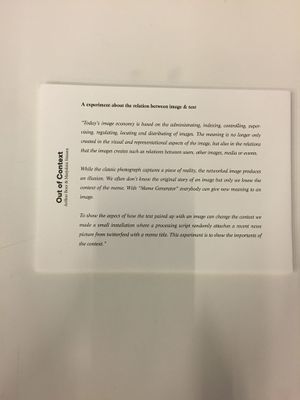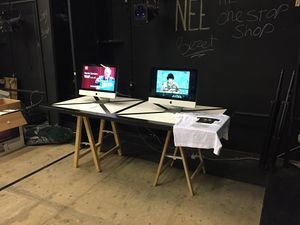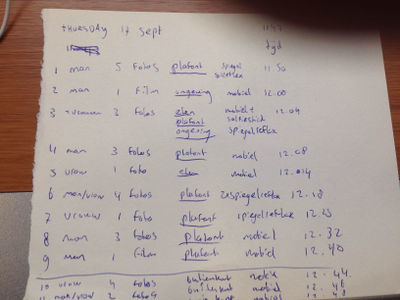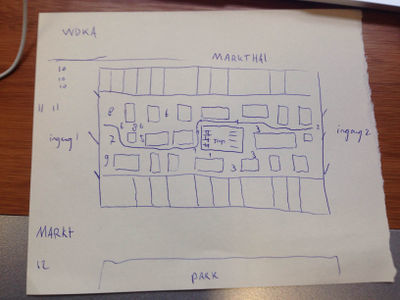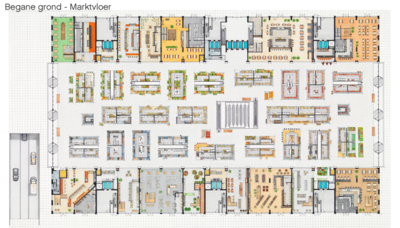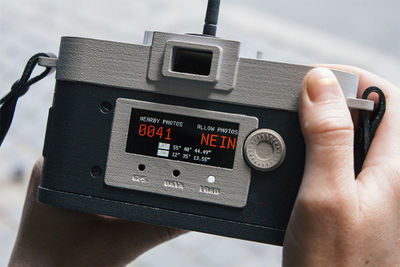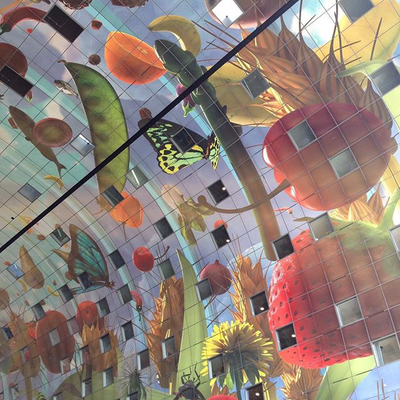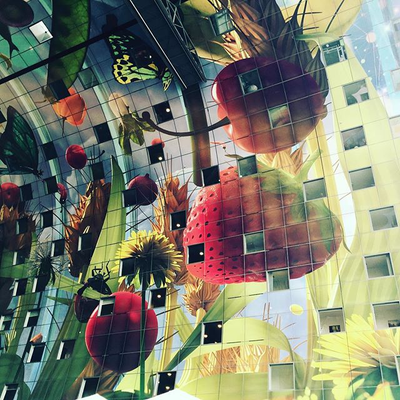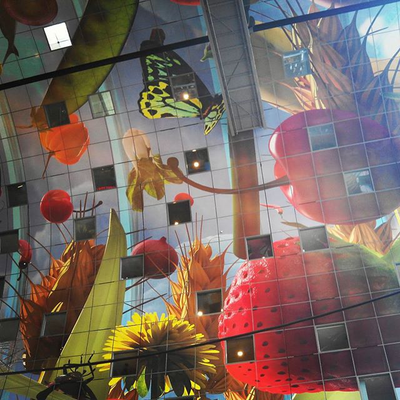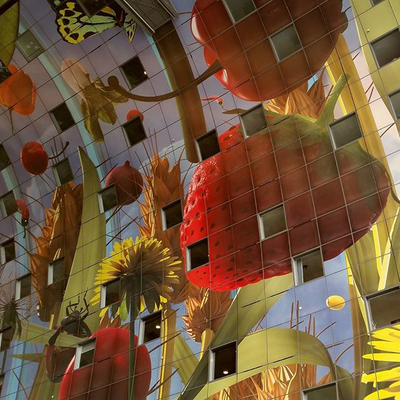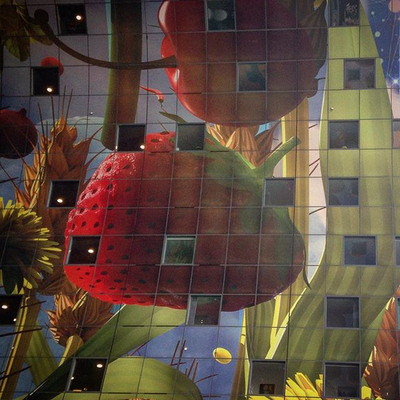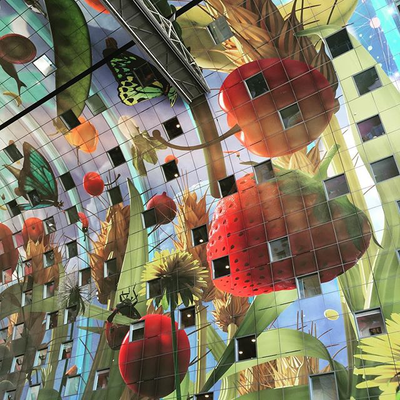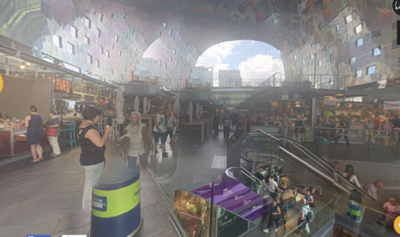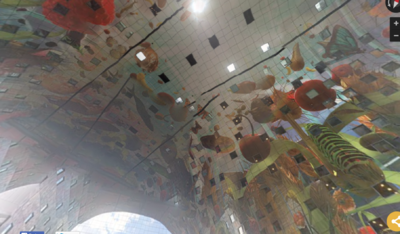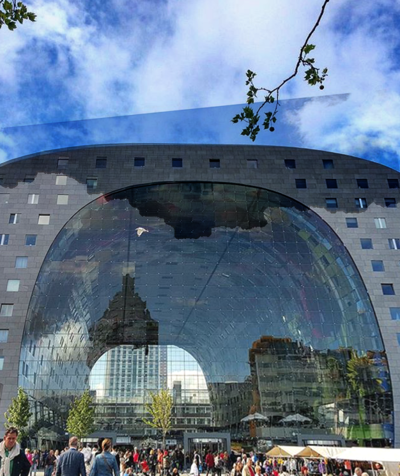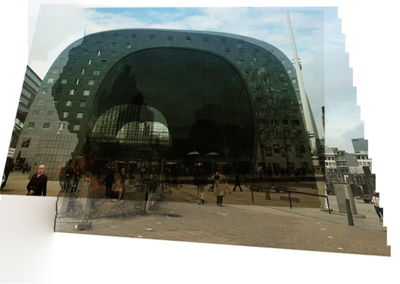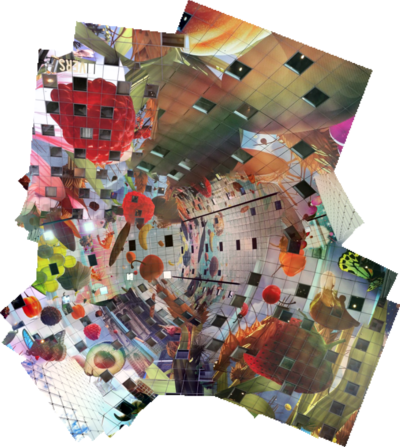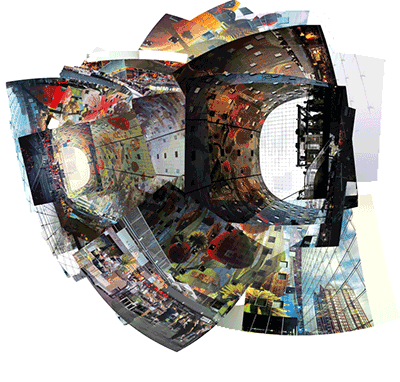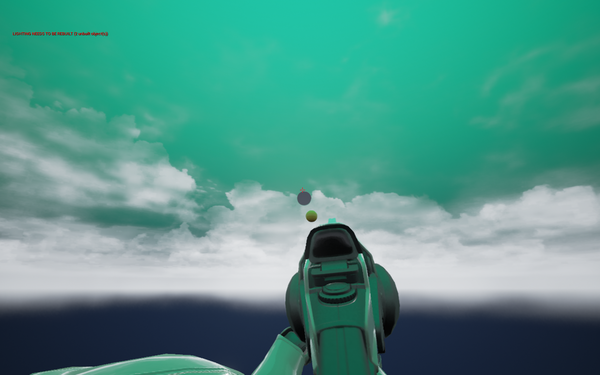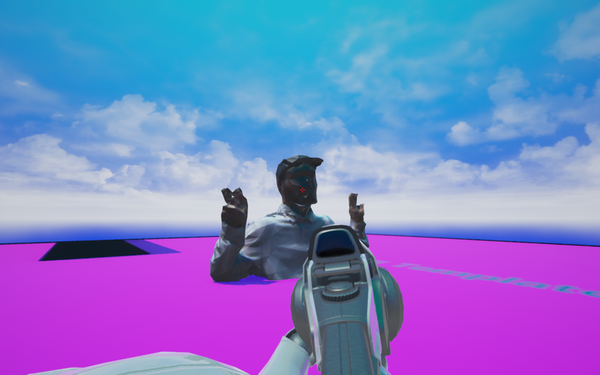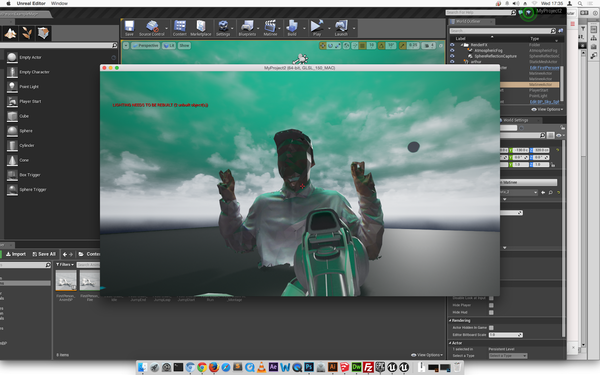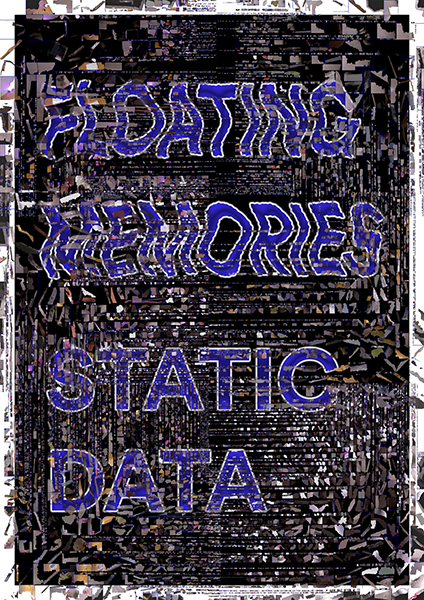User:Arthur Vince/UTC
Contents
UNRAVEL THE MEME
RICKROLLED
In 1987 Rick Astley was released, making it a solo debut single of the album 'Whenever You Need Somebody'. Later at the 4CHAN community, one of the founders m00t, says that the RickRolling started on the VideoGame board circa May 2007. This all started with the predecessor named 'DuckRoll'. The Duckroll all started because a word filter on the 4CHAN boards turned the word "egg" into "duck". When typing eggroll it would turn into duckroll. Later a picture with a duck on wheels became popular "Duckroll" by send it to a friend or someone who is anticipating something and gets this picture to trick them. Basically getting a duckroll when instead they want to see another picture.
Since the game GTA IV was so anticipated int he year 2007 people started to link Rick Astley's video on the 4CHAN platform disguising it as a sneak preview or trailer for the anticipated game. This is how the RickRoll all started. It is a 'Bait and Switch' type of joke.
This can happen on Youtube itself, with misleadingly titled videos, or with links from other sites to youtube. These videos usually have a misleading image in the middle of the video, so that the thumbnail on youtube looks legit. Sometime they even make names that seem legit.
Timeline
- 2007 (APRIL/MAY): 4CHAN, DuckRoll.
- 2008: Gaming Scene, GTA IV Sneak Peak Release video is Rick Astley’s music video
- 2008: Youtube uses it as April Fools Joke.
- 2008: NYC Mets uses “Never going to give you up” as 8th inning song, because of popular vote of the people
- 2008: Rick Astley gets to preform his classic song on the Macy's Thanksgiving Parade after 14 years.
- 2008: Rick’s song becomes so popular that he even gets voted for “Best Act Ever” in the MTV European Music Awards.
- 2008: Studies show that in 2008 18 million adult Americans were RickRolled.
- 2010: Lyrics are used by Oregon’s house of Representatives during a House Sessions.
- 2010: WikiLeaks uses lyrics in an article about serious attacks on Visa, MasterCard, Amazon and Paypal
- 2011: The Whitehouse tweets a link, which is actually a link to Rick Astley’s music video.
Popularity
The reason why it became so popular was because it was a way to be part of the joke. The Rickrolling slowly expanded from the Gaming-Scene to more of the mainstream where other anticipated audiences were tricked too. It is also fun to see your friends or known people react to it as a form of Peer-Reaction. This type of jokes have been tormenting the internet from a long time, with not only having the RickRolled as a Bait-and-Switch video there are also others in that same category such as:
- Scary Prank Videos
- Two Girls one Cup
(Don't google for your own safety) - "X Amount of girls online in your neighborhood and want to chat" - Ads
- Fake Close Buttons on Ads
- Fake Outs
Targets
- People Looking for Movie / Game Trailers / Footage
- Abridged Series Watchers
- People who try to watch TV on Youtube
MORE RESEARCH
Which News Sites
Generating Content
For the generation of the twitter content we will probably have to use an API to get our content.
Types of APIs - Source - There are many different types of APIs for operating systems, applications or for websites. Windows, for example, has many API sets that are used by system hardware and applications — when you copy and paste text from one application to another, it is the API that allows that to work. Most operating environments, such as MS-Windows, provide an API so that programmers can write applications consistent with the operating environment. Today, APIs are also specified by websites. For example, Amazon or eBay APIs allow developers to use the existing retail infrastructure to create specialized web stores. Third-party software developers also use Web APIs to create software solutions for end-users.
Popular API Examples - Source -
Programmable Web, a site that tracks more than 13,000 APIs, lists Google Maps, Twitter, YouTube, Flickr and Amazon Product Advertising as some of the the most popular APIs. The following list contains several examples of popular APIs:
- Google Maps API: Google Maps APIs lets developers embed Google Maps on webpages using a JavaScript or Flash interface. The Google Maps API is designed to work on mobile devices and desktop browsers.
- YouTube APIs: YouTube API: Google's APIs lets developers integrate YouTube videos and functionality into websites or applications. YouTube APIs include the YouTube Analytics API, YouTube Data API, YouTube Live Streaming API, YouTube Player APIs and others.
- Flickr API: The Flickr API is used by developers to access the Flick photo sharing community data. The Flickr API consists of a set of callable methods, and some API endpoints.
- Twitter APIs: Twitter offers two APIs. The REST API allows developers to access core Twitter data and the Search API provides methods for developers to interact with Twitter Search and trends data.
- Amazon Product Advertising API: Amazon's Product Advertising API gives developers access to Amazon's product selection and discovery functionality to advertise Amazon products to monetize a website.
Useful Links
Popular Memes
These memes below are a few of the most popular memes we will be using as a substitute text to change the context of the images. By using these titles hopefully this was create an interaction or topic of conversation.
GOODGUY GREG • FOREVER ALONE • YOU DON'T SAY... • NOT BAD! • THEREFORE... ALIENS!! • BAD LUCK BRIAN • WAT? • MOON MOON • DRINKING MY OWN PISS • HOMOPHOBIC SEAL • FIRST WORLD PROBLEM • SCUMBAG STEVE • BRONIES • WOW • FRIENDSHIP IS MAGIC • BITCH PLEASE • WATCH OUT, WE HAVE A BADASS OVER HERE. • OVERLY ATTACHED GIRLFRIEND • I TOOK AN ARROW TO THE KNEE • RIDICULOUSLY PHOTOGENIC GUY • SEE ME ROLLIN', THEY HATIN' • DERP • ONE DOES NOT SIMPLY WALK INTO MORDOR • HATERS GONNA HATE • DO YOU EVEN LIFT, BRO? • SOCIALLY AWKWARD PENGUIN • SERIOUSLY? • TRUE STORY • DEAL WITH IT • AIN'T NOBODY GOT TIME FOR THAT • I THANK NOT ONLY GOD BUT ALSO JESUS • U MAD? • LOOK AT ALL THE FUCKS I GiVE I DON'T WANT TO LIVE ON THIS PLANET ANYMORE • 2/10 WOULD NOT BANG • I LIED • OH GOD... WHY • HONEY BADGER DON'T CARE • COME AT ME BRO • MY BODY IS READY • WORK-SAFE PORN • THAT ESCALATED QUICKLY • MOTHER OF GOD • SHUT UP AND TAKE MY MONEY • LIKE A BOSS • IT'S A TRAP! • RUINED CHILDHOOD • CLOSE ENOUGH • DEAL WITH IT!
CONCEPT
Since the over all theme is "CONTEXT" we had two types of contexts that we are incorporating. We want to show that by changing the text of an image it can create a new context of the image. The story behind it will change and it might even change the topic conversation because of his certain image. The other part is the context of "RickRolling" it all started with substituting a link with other content.
TECHNICALITIES
By taking news pictures from a twitter feed we get a reliable source of content and data. All the data is gathered by the processing script and from a text file a
DOWNLOADS
Down below are downloadable links, mainly our presentations.
- Pitch Presentation: Out of Context
- PDE Script: Online + Data Pictures
- PDE Script: Offline + Java Library
END RESULTS
On Thursday we had our first presentation at Eendrachtstraat.
UNRAVEL THE INFRA-ORDINARY
Assignment
Design/make/craft one or more objects, spaces (or both) that address changes in physical and/or social behaviour in public and private space due to digital devices. The final design must be based on findings from your initial research and should relate to a clearly articulated perspective. Examples of possible perspectives are: critical, speculative, practical, visionary or other.
You will be working in duos. Each duo must post their research on the wiki.
Medium, technology and material choices are open. However you must be able to make clear how the choices made are relevant to your aims and outcome.
Topics digital influence
- Sifi, voice recognition
- QR code
- Social Media
- Payments without code
- Virtual Life
- Games and rewarding
- reading news
- vinger print
- google glass
- Pokemon Go
- Posture and body movement change
- The Phone/internet as a space vs the physical world
- Looking down, save with phone
Exploration
I want to the Markthal, because I always bike past it. I always notice that everybody makes pictures. For me they look all the same so I went on field research watching peoples behaviour in the Markthal.
Research
EVERY TIME THERE’S a sunset worth seeing in New York City, my Instagram feed is awash in shades of orange, pink, and purple. I’m not complaining—not really. Sunsets are pretty! And I, too, am guilty of a sunsetgram or two. Or 10. But after seeing the 15th photo of downtown Manhattan backlit by a glowing sky, it starts to get a little … I don’t know. Tired.
Those of us guilty of this invariably apologize by writing self-deprecating captions and funny hashtags. But someone, or something, really ought to keep us from taking such clichéd pics to begin with. That’s the idea behind Philipp Schmitt’s Camera Restrica.
The German designer has developed a camera that allows the user to take only original photos. Want to snap a pic of the Eiffel Tower? Good luck, because it’s not gonna happen. But that gas station next to the Dairy Queen in Grand Island, Nebraska, is fair game.
Schmitt’s camera (it’s a prototype at the moment and doesn’t take actual photos just yet—he’s working on integrating sensors and optics), houses a smartphone that uses GPS metadata from Flickr and Panoramio to determine how popular a location is. If it identifies more than 35 photos taken in a given location—about 115 feet in any direction from where you’re standing—the camera’s shutter retracts and blocks the viewfinder so you can’t take a photo. A display on the camera indicates how many photos have been taken in that location, and an audible cue reminds you to move along.
Camera Restricta from Philipp Schmitt on Vimeo.
That a piece of technology can judge creativity on something as quantitative as geo-tags is both fascinating and discomforting. “A lot of people are really offended by the idea,” Schmidt says. There are some inherent flaws in the logic, which he readily cops to. A single GPS point doesn’t take into account that the ugliest bench known to man may be located just across the street from the Eiffel Tower, and may not recognize that is what you’re trying to photograph.
Still, it’s interesting to consider how something like Camera Restrica could be integrated into existing technology. There are valid worries of censorship—that a government might be able to dictate what you can and can’t photograph. But mostly, I find the concept funny. I’d like to see it taken even further, so that a camera’s viewfinder uses image recognition software to determine if what you’re looking at, not just where you are, is a worthwhile photo. It could take into account different parameters—time of day, season, how many people have take similar photos on Instagram—and then tell you that maybe that photo of your feet in the sand on a beach isn’t such a good idea after all.
http://philippschmitt.com/projects/camera-restricta
11 April 2012 Has Instagram made everyone's photos look the same? A mobile phone screen displaying Instagram photos Instagram, the photo app, has been sold to Facebook for $1bn. But has it sparked a wave of generic retro-looking snaps, asks photographer Stephen Dowling. Instagram - and its bedfellows such as Hipstamatic, Camerabag and Picplz - have brought to digital photography a fever for a certain style of imagery. Smartphone photos are given saturated colours and Polaroid-style borders, dark vignettes, light leaks and lens flare like those that plagued the Kodak moments of previous generations. It may be 2012, but popular photography hasn't looked like this since the early 1970s. The trend began a few years ago with Hipstamatic, an app which apes the look of lo-fi toy cameras. Now Instagram allows a pic to be taken on your smartphone, a digital "filter" to be applied, and the resulting pic made viewable to the site's ever-increasing community. Chances are that that artfully retro pic of a display of cupcakes your friend showed you at the weekend was an Instagram pic. Before and after...
Applying Instagram's X-Pro II filter to the image for a more "vintage" feel Launched in March 2010, Instagram took until the end of that year to notch up its millionth user but from there its ascent was dizzying. Just 15 months later there are more than 30 million account holders and a billion pictures on the site's servers. That's a lot of cupcakes. Instagram's use of filters mimics some of the processes photographers used to push photographic boundaries - such as the super-saturated colours created cross-processing slides in negative chemicals, or using expired film's palette of soft, muted colours, or playing around with camera settings or darkroom equipment to boost contrast. The site's co-founder Kevin Systrom has said : "The idea was to make mobile photography fast, beautiful and fun. We learned from experience that taking photos on the phone didn't lead to the results that we wanted, so we created the filters and tools to achieve a more artistic experience." Systrom and the other suddenly very rich creators of Instagram may have good cause to thank a man called Michail Panfiloff. Panfiloff is not on the board of Facebook. He is not a tech commentator who predicted the site's rise to riches. (Clockwise) Man playing pool, lavender, man in sunglasses, ferris wheel, a ship floating on the sea Image caption These are not Instagram pics. They are film In fact, he was the head of a Cold War-era Soviet optical plant in Leningrad which decided to make a knock-off copy of a humble Japanese point-and-shoot camera in 1982. The resulting camera, the Lomo LC-A, could be considered the godfather of Instagram's 21st Century success, and why digital photography suddenly looks very retro indeed. Film photographers went through this retro-fashioned revolution a decade and a half ago, after some Austrian students found Lomo LC-As lurking in a Prague camera shop and created the "don't think-just-shoot" ideal of Lomography in the mid 90s, often utilising plastic-lensed toy cameras and film that had long passed its sell-by date (it was a lot cheaper). What is Instagram?
Instagram is a photo-sharing smartphone app launched in 2010. The app provides 11 different custom "filters" - such as Lomo-fi and Toaster - to photographs, to alter the colours, border and tonality of chosen photographs. The app has around 30 million iPhone users and had five million downloads in just six days after being launched on Google's Android operating system a week ago. Other popular photo apps include Hipstamatic, Infinicam, Adobe Photoshop and Camera Awesome. The craze helped create an icon of the LC-A to the point where production was restarted. Now Facebook and the Flickr-verse are full of "Lomo" shots but the difference is these are bits and bytes. The ability to turn an everyday pic into something "artistic" at the click of a button is the very embodiment of digital photography's curse of convenience - no long learning curves, or trial and error with expensive rolls of film. But is it creative? Writer and photographer Kate Bevan doesn't think so. "Do I think it's artistically valid? No. I think it kills the creative instinct. However, I do love sharing and I understand the mindset that wants to make his or her pics stand out, even though Instagram does the opposite of that." The first time one sees a picture with an Instagram-type filter applied, it might be impressive. But the thousandth time? "I'm all in favour of people experimenting with pictures, and I'd never be elitist about photography," suggests Bevan. "But I don't think it encourages experimentation - it encourages the use of lazy one-click processing. "Hardly anyone who's whacked a one-click filter on an image is going to have the patience to sit and play with the sliders in Lightroom, or get to grips with Gimp [free photo-editing software]." Untreated and treated images of Santorini Image caption Before and after: Untreated and treated images of Santorini My own Flickr account has a fair few images that look like they could have been created with Instagram's retro-flavoured algorithms. They weren't - they are all film. They are the result of a decade and a half's mistakes and mis-steps. Cross-processed slide film with wild colour shifts. Grainy, muted colours on out-of-date film. Flare and faded colours on lenses made without modern, contrast-boosting coatings. The mistakes, however, made me a better photographer. And the moments when it does somehow come together - like the following shot of a cyclist on London's South Bank on a 60s-era Zenit and expired film - made the perspiration worth it. Shot of a cyclist on London's South Bank Image caption Using vintage cameras - like this image with a Zenit - can help create a lo-fi effect The film is aged and expired, the colours boosted and warped, but the effect is dependent on the characteristics of that single frame and the limitations of the camera it was loaded into. No other picture will look quite like it. Not all of Instagram's filters are so eye-popping and not all of its users travel down the retro path. Some photographers give their shot-on-the-hoof pics a gentle tweak using Instagram. One such convert is Kevin Meredith (aka Lomokev ), an author, photographer and teacher based in Brighton. (left to right) tall building; ice cream; balloons on a beach Image caption Instagram photos taken by Kevin Meredith (Lomokev) "I uploaded my first picture to Instagram on 12 October 2010. It was of some sausages frying in a pan - awe-inspiring stuff," he says. "I do use Instagram differently to how I use film or DSLRs. Instagram images can be all about the immediacy of the moment when I want to let people know what I am up to. I generally send my Instagram pictures to Twitter and Facebook. I keep my Flickr stream for 'real' pictures that I shoot with film and digitally." Meredith also believes Instagram can be a genuinely creative tool as well. "It is creative. After all an Instagram image that someone takes even before a filter is added is unique, no-one has ever taken that picture before even if there have been very similar ones taken before it. "If two people use the same camera, film and lab to develop pictures, their images might visually look the same but that does not stop them putting their own style into the images." An Instagram image of the Lemonheads on stage Image caption An Instagram image of the Lemonheads, taken by Kate Booker Another Instagram fan is music photographer Kate Booker . She's an occasional user of the app alongside shooting on DSLRs and film. For her, Instagram's social aspect is another plus. "I'm intrigued by other people's worlds and Instagram allows you to view the most popular users, follow people and view other people's lives and their perspectives in a really simple way. "Images transcend languages and I just love that Instagram is internationally used and someone in Mexico can upload an image instantly so you can get a view into their world and likewise I can upload something and share so anyone can view my world." Meredith also believes Instagram's embrace of retro aesthetics may have another effect - the rebirth of film. "There will be lots of people out there that will just use smartphone apps to take pictures and then use apps to sex them up. But there are those who want to dip their toes in film. "I am always pleasantly surprised when I teach one-day workshops and colleges and universities to see the amount of students that use film and get it rush developed. I have run the same workshop two years running with Bath Spa University Graphics students. More used film the second time round and they're not even photography students."
http://www.bbc.com/news/magazine-17667891
Source: Instagram
Concept Idea
- DRAFT
I went doing field research and I found out, same as in Asia that everybody makes pictures in the same places. So i want to the markthal and saw that everybody was making pictures of the building outside, of the food, and the ugly (personal taste) artwork on the sealing (personal taste). So I was thinking. why do people make these pictures. There are already thousand of pictures who are the same or even better. why do people need there own pictures and most of these pictures they just keep in their phones or cameras. Some people were filming while walking. So i was thinking can i reconstruct the markthal with these pictures by overlaying them. So you could see the density of the places people photographed the most. For instants the ugly artwork if i use all the pictures already only under the #markthal you get 27.000 pictures. If i overlay these pictures you can see wich points are more photographed than other places. And I was thinking can i make a user based sort of streetview virtuality with these pictures. So people dont make these pictures for nothing but join forces and reconstruct the physical world in a virtuality
We now allow Google Streetview to put our wold in databanks. We already live our lives more and more in the virtual world. How can these pictures be meaningful again?
I want to create an user based virtual reproduction of the Markthal. With this I want to give meaning again by letting the pictures taking part in making a simulation of the markthal. The project will be focused on the artwork of the Markthal. Trying to ....;......
Questions:
- Why do we all want our own picture of the markthal?
- What are we doing with the pictures?
- Where is the density of pictures the highest?
Experiments
CRAFTING FUTURE MEMORIES
IDEAS
- METADA behaviour prediction
RESEARCH
- Visual memories of the future
- Verslaafd aan je Telefoon Zembla
- Episode 3 Black Mirror, (Google Glass)
- CITIZENFOUR (Snowden)
NOTES
- CLASS 8 OCTOBER
Memory models: - Memory as a birdcage, memories fly around and you can catch them. - Wax tablet the metaphor of the memories - Memory palace, create physical place in your mind. Where you store the objects. Somebody with good memories. Stored memories. - (writing) books as the media. Metaphor of memories in a book. -phosphor as the idea of memories. How something can be created about nothing - Shell, sound from the other side. Echo from the wind but they believed that it was the memories of the other side.
How the idea of memory changes over years with new techniques and media.
The fear of memory, imagination was less scary. Ideas of memory.
Every invention tries to prove how the body works. Translation from biologic to mechanical.
(flashback) (photographic memory) reverse to the idea of photography as our memories.
Traditional system memory and media.
Pure Memory, Accrate technological aid.
Every technology
The Biker, Film viewer work of Simon & Jon
Imaginary Museum work of Simon & Jon
(See wiki)
Black Mirror Cloth Glass? Paint the landscape with work of Simon & Jon The Black Mirror that reduses colours. Even before the camera people where searching for tools and materials (mediums) that are where searching for changing the experiments.
New memory that recreates new memories. Not your memories but from the camera lens.
2. DEFINING MEMORY Our idea of history, memories. Externalising our memories of the past. Influenced by rich white man who can buy camera’s our before pay artist to make paintings.
Embodied in the Brain, Embedded in Culture, Enabled by Technology
2. Defining Memory Reconsolidation Theory:
Sensory memory Short Term (Working Memory) Long Term Memory
Short Term (RAM) Long Term (Harddisk)
Short term is unstable
Long term memory (inactive state), Short Term memory (active state)
When you reactivate your long term memory you create a new memory.
GROUP
Arthur Boer
&
Boris Smeenk
INTRO
Human memory is floating and unstable. Because we are registering more and more events in our life, memories become static and factual. However, these memories can be influenced by commercial companies and even government.
Advertising is a constantly changing medium. Slowly we are learning to filter advertising from our daily live. We don’t look at billboards that often and we even manage to filter our Instagram feed. With advertising shifting from public space into our digital worlds, advertising can become more aggressive by forcing itself onto the viewer.
We want to give our audience the experience of a entirely static memory by using the Oculus as a medium. The virtual space you will walk through is a exact replica of the space you are in at the moment. However, this space will act differently as companies have expressed their influence. A Coca-Cola bottle can now act as an advert on its self in this space.
REFERENCES
TYPES OF REGISTRATION
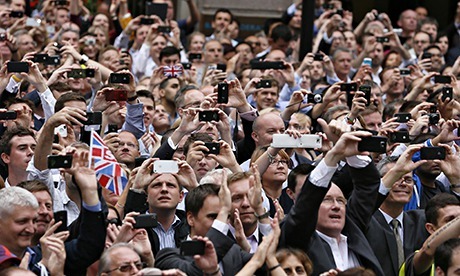
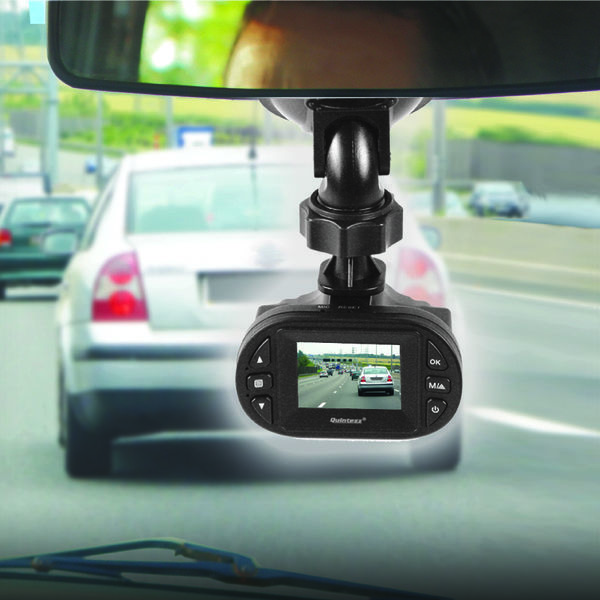
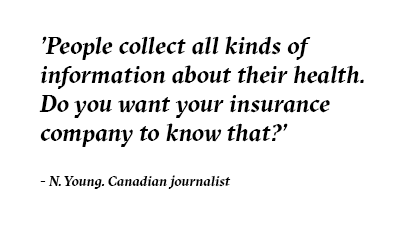
PREMIEKORTING IN RUIL VOOR DATA

QUANTIFIED SELF
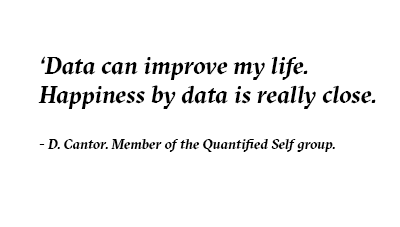
ZEMBLA - VERSLAAFD AAN JE TELEFOON
TEST
POSTER
SETTING
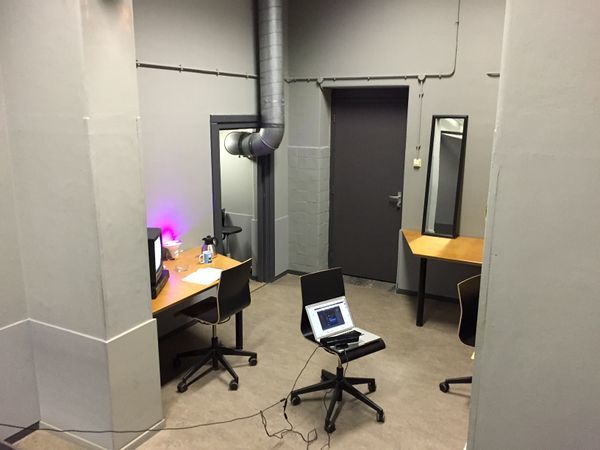
[1] Created visual memory
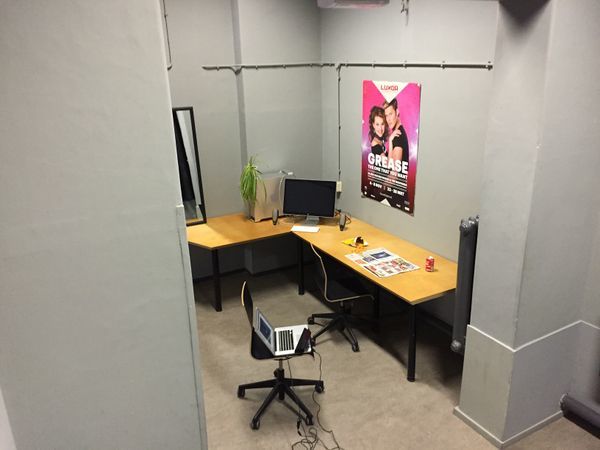
[2] Created visual memory
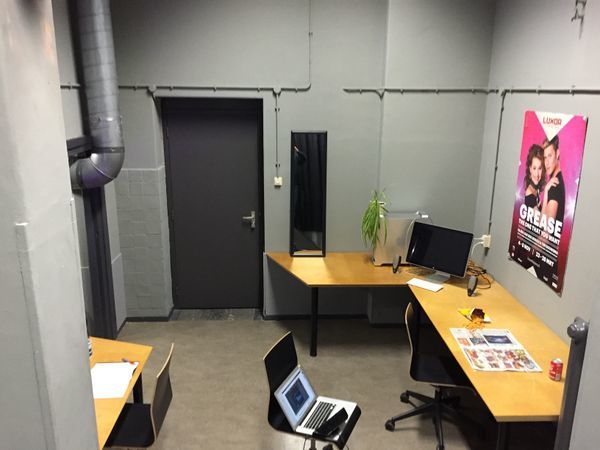
[3] Created visual memory
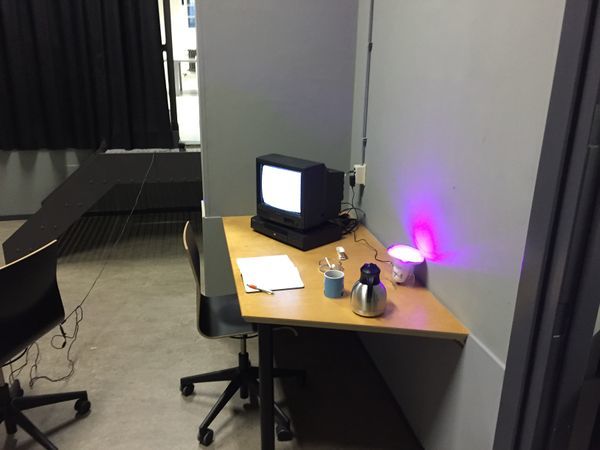
[4] Created visual memory

[5] Created visual memory
STATIC DATA
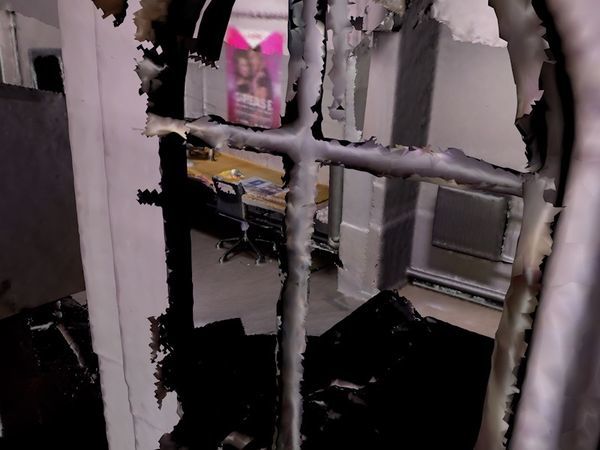
[1] 3D scan of the room using the Kinect.
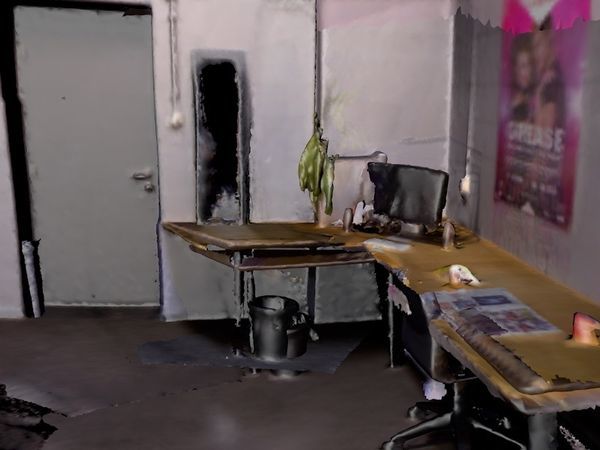
[2] 3D scan of the room using the Kinect.
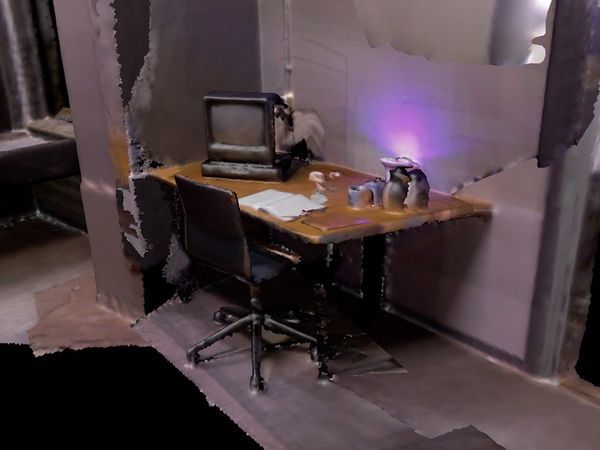
[3] 3D scan of the room using the Kinect.
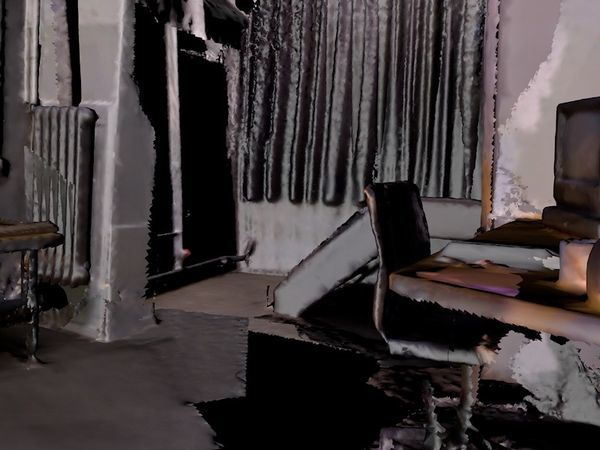
[4] 3D scan of the room using the Kinect.

[5] 3D scan of the room using the Kinect.




